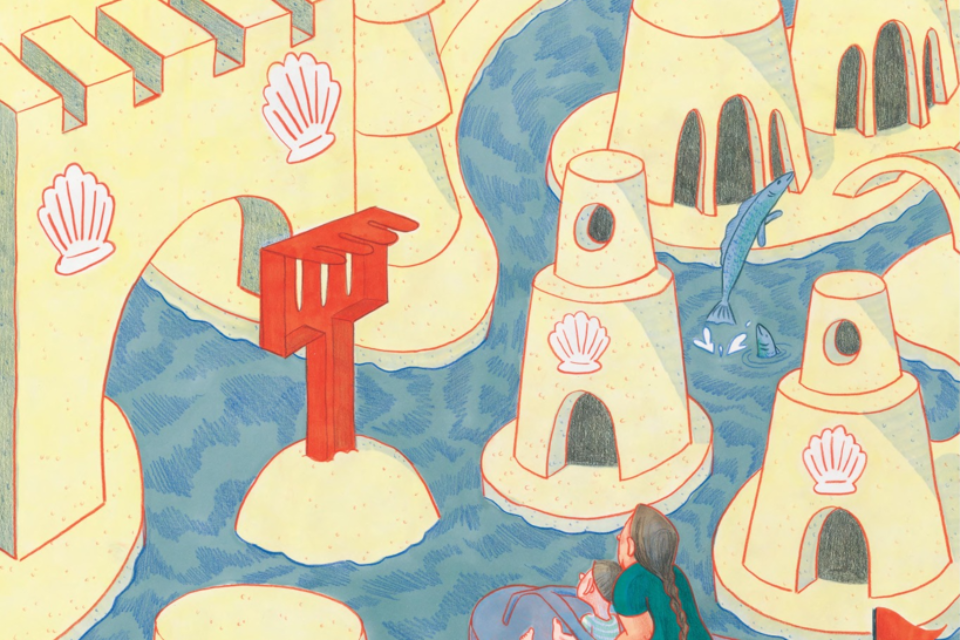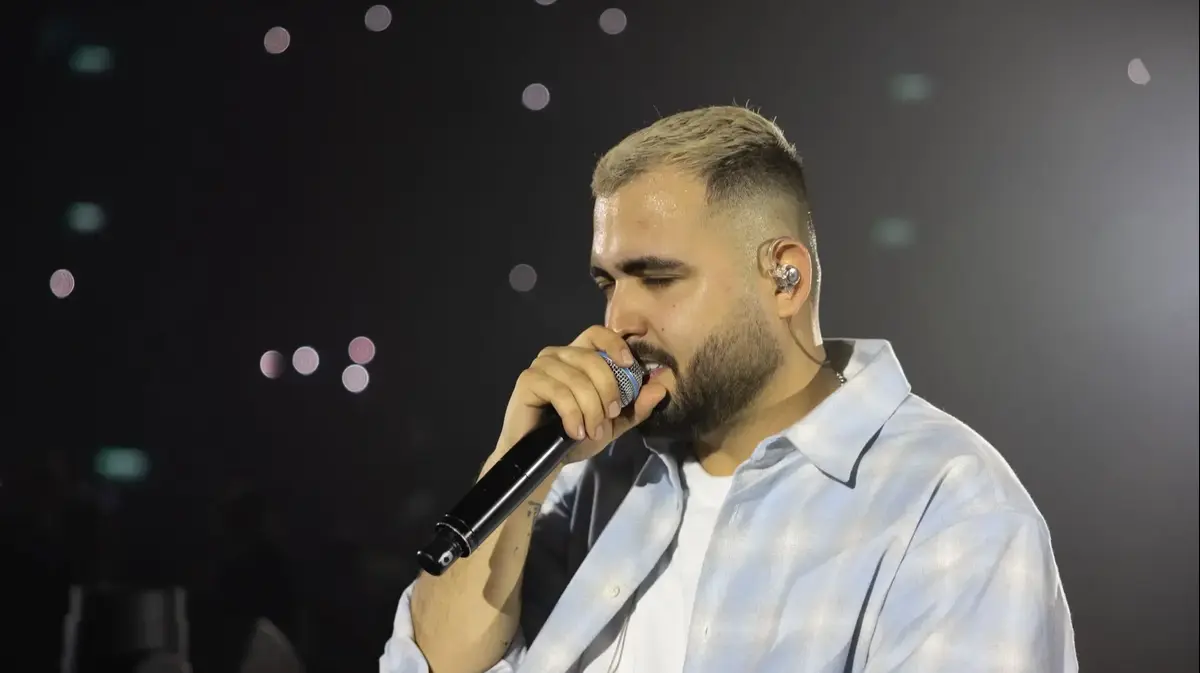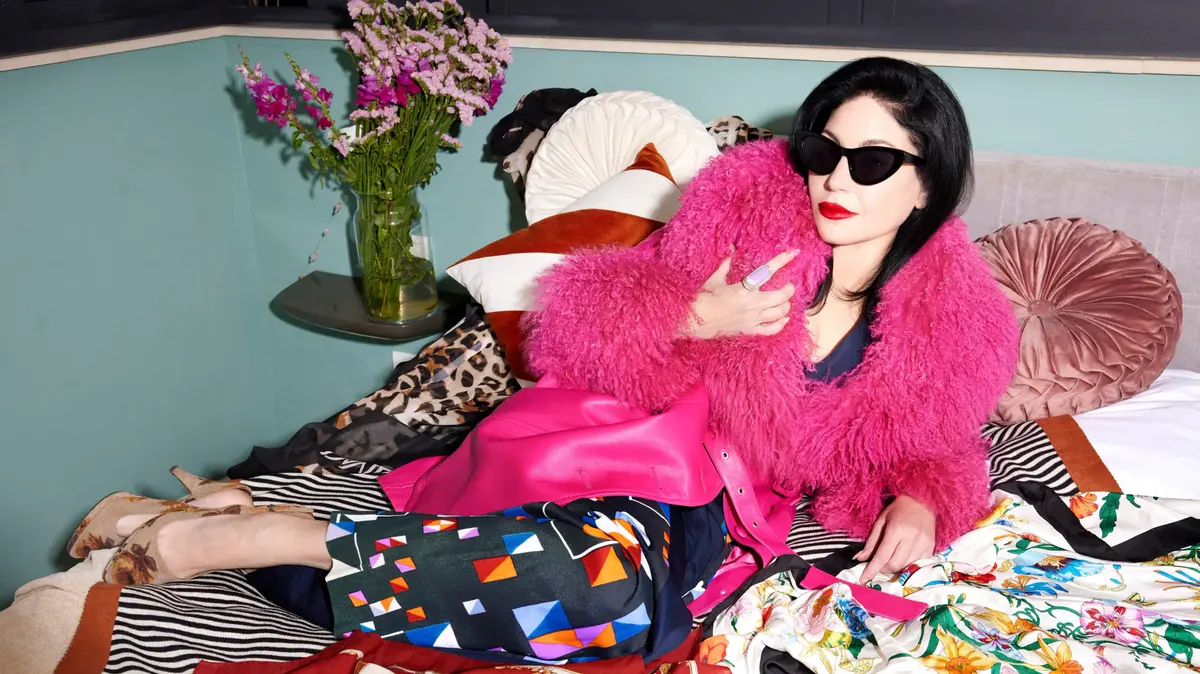A routine stroll around Jerusalem in the coming week in the Jaffa Street area can bring you together with works of art almost randomly.
One of them, that of Yaniv Shimoni for example, simulates a roof in Givatayim in the 1970s, full of television receiving antennas looking to get on the frequency of a Turkish film and creating the appearance of a forest.
In another, like the work of Ila Landau, a bed is placed that allows a public glimpse into a married life.
What they and the rest of the exhibitions of the "Outline" festival for illustration and words in Jerusalem have in common is the element of repetition.
Some of them are a return to childhood memories.
In others, it is an open rehearsal, which allows visitors to experience and participate in the preparations for the play or in scenes from personal married life.
The theme that connects all the themes of this year's festival followed two years of an epidemic and the return to normalcy.
The work of Elad Lifshitz, "Repeated Print" exhibition,
"The feeling was a bit of a return to life after the Corona," explains Noa Kellner - an illustrator, the artistic director of the festival, which is now in its sixth year and one of its initiatives.
"Actually, during this period, we did zoom exhibitions all the time," she says, "and we didn't know if the exhibitions would reach people or not. In the end, people were surprised and came, and it was amazing, but it was a different experience. The idea of 'rehearsals' was to return to ourselves a bit. Of course we took It goes in many directions: there are the rehearsals in the theater, there is a return to nature, repetitiveness, a mistake that repeats itself. I really like the directions that came out of it."
By the way, "get out of it" - the beauty of the festival, which will be attended by illustrators and cartoonists such as Michel Kishka, Itay Reva, Adi Ardon, Niv Tashbi, Reot Boretz and others, is the fact that the exhibitions in it are accessible and actually meet the visitor in open spaces.
"The idea is not only to be inside galleries, but also to go out to the public," Kellner says.
"To give not only people who know there is a festival and need art to meet it, but also the general public. We had exhibitions at the stations of the light rail, and also at the entrance to the city, on huge advertising billboards. There are all kinds of platforms that have become permanent at the festival, which is very nice. For example, in Yitzhak Navon's train tunnel, we placed beautiful leather armchairs, and every year we place a changing exhibition there. From now on, there is always art there. We want to try to use the things we have on the street, and thus make art accessible. Illustration is art that is accessible, even to a person who does not need Art is naturally easy to connect with and speaks to everyone."
Vision, initiative and fulfillment
The idea for the Hawa festival in 2017, as a kind of Jerusalem counter to its Tel Aviv equivalents.
In a way, more than a story about illustration, words and art, it is a parable about vision, initiative and the ability to realize them.
"It all started with an exhibition we participated in during illustration week in Tel Aviv, me and an illustrator friend named Yaniv Torem. We wanted to bring to Jerusalem the whole celebration of illustration, which is always at the center," she says.
"We did an exhibition of Jerusalem illustrators at Beit Hansen that also connected with Spoken Word, which was at its peak at the time. We asked for some money from the art department of the municipality, a small budget for prints, and the event was really successful. From there, Hila Smolyansky, the head of the plastic arts department at the Jerusalem municipality, gave us her back, We connected with the Beta art center that belongs to the municipality, and from there everything started to unfold."
The work of Niv Tashvi, the "Open Return" exhibition,
How does your festival differ from the one in the center of the country?
"There are many differences. First of all, it's the quantity: the festival in Tel Aviv has about 70 exhibitions, it's very big. It's a rallying cry that appeals to everyone and there's beauty in that. We decided from the beginning that what's important to us at the festival is paying the illustrators. We don't want to work for nothing, that's part of it. From the point of making this profession one that is seen and appreciated. Illustrators should get less work for free, and that way they will be seen more. The idea was to bring fewer exhibitions with much more curation. We do not present 70 or 80 exhibitions, but a maximum of 15. The beginning of this comes Out of a desire to combine the illustrations with the texts, and I think there is something a little Jerusalem in its character."
"On top of that, when I finished studying at Bezalel there was no place where you could present illustration works," she says.
"There is something lonely about working in illustration, because you really do it alone. It's just you, the computer and the clients. It was important for us to create a community of illustrators, and I think we succeeded in that."
were we wrong
We will fix it!
If you found an error in the article, we would appreciate it if you shared it with us


/cloudfront-eu-central-1.images.arcpublishing.com/prisa/XSO4XYYIOJGKNPSUBHUGGDBMFU.jpg)











